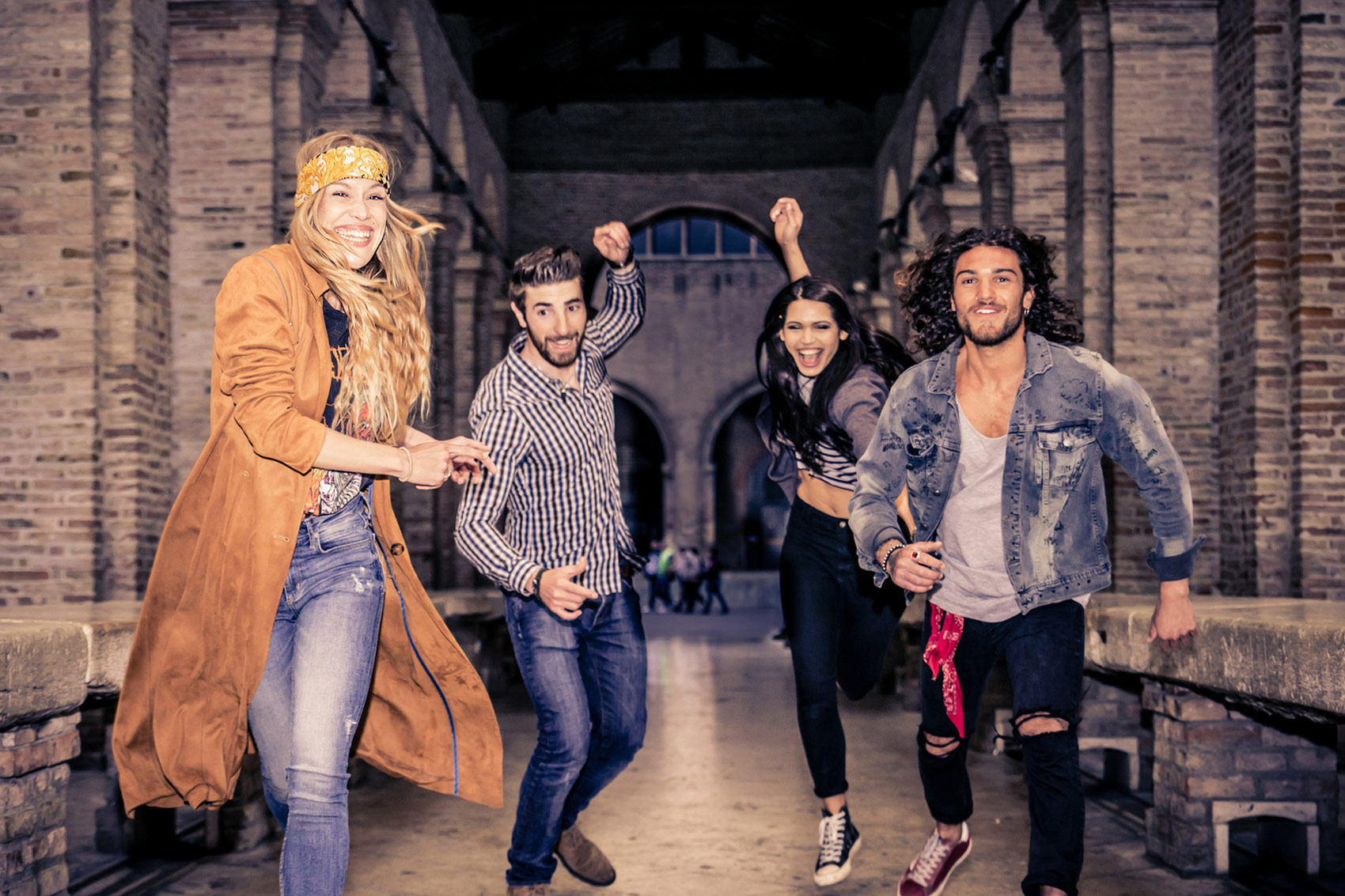The gamification of public spaces was a welcome addition to the public experience, increasing patronage and creating new ways to engage. But the downside to the popularity of this model has been the mixed bag of approaches being delivered. In simple terms, the market has been flooded with providers offering varied levels of experience and expertise.
Done well, public space activations welcome streams of new visitors – often from previously hard-to-reach demographics – and help venues shine a light on the space, content and knowledge. Done poorly, the result can sit somewhere between a wasted budget and an embarrassing public spectacle, with frustrated Boards wondering why they signed off on this risky idea in the first place.
Having built 3 businesses (you can check us out here, here and here [links to businesses]) focused on turning hidden content and concepts on their head to create engaging team building, venue activation and professional development outcomes, we’ve seen the good, the bad, and the ‘what on earth were they thinking?’.
From the good, to the very good to the…. not quite so good…. here are 5 things we’ve learned make for a successful public space activation (and 5 that don’t!).
1. Put patrons in the driver’s seat (Respect for the experience)
Interactive learning lets people immerse themselves in the experience, creating powerful new connections to your venue, message, content and values. Importantly, this approach gives your visitors agency to dictate their experience, moving from passive consumption to active engagement as they construct a mental map of their place in the world in light of their new learning.
Immersing people in your content helps them contextualise information and make the connection between information hidden within your walls, and their own personal journey. A museum might focus on placing patrons within stories of past heroics or tests of human character; or for a zoo, perhaps explore dwindling vulnerable animal populations and the devastation of excessive game hunting – and the active role each patron can play in creating a better future that learns from the lessons of the past. Activities that immerse the learner in the experience helps them not only understand the content, but connect with it in a meaningful way.
Activate: Look for engaging experiences that put visitors in the driving seat
Avoid: Sharing knowledge through one-sided lectures
2. No (wo)man is an island (Respect for engagement)
The secret sauce for turning interactive and immersive experiences into unforgettable moments? Harnessing the power of peer learning.
Time for an unpopular, but well-founded opinion: sometimes, ‘fun’ technology creates limiting experiences. Virtual reality headsets have been a popular choice, giving visitors the opportunity to engage with a facet of the content in real time. However, a crucial limitation on the learning experience – and for creating memorable moments in general – is that these headsets create disconnected, solo experiences, with no or very limited opportunity to interact with others. Visitors (and staff!) are further frustrated by long lines for a 10-minute experience that’s just one tech glitch away from crashing to the ground.
Instead, where we’ve seen more success is public activation experiences that draw on the benefits of peer learning. Peer learning creates human connection, building bonds by prioritising the content and the shared goal of solving a problem or devising a solution. This learning/together model creates powerful moments of fun and interplay, creating opportunities for greater enjoyment, sticky learning outcomes and the kind of memorable moments that encourage regular repeat visits, particularly for new audiences in the largely untapped 15 – 35 market.
Activations based on peer learning models also offer public spaces greater opportunity to commercialise their offering in a way that still pays respect to their content.Offering the gameplay for private booking for team building experiences can help visiting groups team forge stronger bonds, stimulate lasting learning and absorb new skills that translate into better performance – be that in the workplace or even sporting teams.
Activate: Look for venue activations that encourage teamwork while still respecting the content – and other visitors the opportunity to explore it in peace
Avoid: Gimmicks that shrink the experience down to a lonely, one-off engagement
3. Don’t forget the ‘EDU’ in ‘edutainment’ (Respect for the content)
In the previous point, I mentioned ‘sticky learning outcomes’. What’s a sticky learning outcome? It’s knowledge that sticks! Traditional learning is more easily forgotten, but leveraging peer learning, interactivity and immersion creates memorable experiences, making it easier to retain and retrieve that knowledge at a later date. But even with these elements, a barrier to sticky learning can remain: chasing entertainment and gimmicks at the expense of knowledge.
Why does knowledge matter? Gamification of public spaces serves two roles. One, to attract patrons. And two – to share the important content hidden within the space. It might be an art gallery highlighting the value of their artists or a certain technique or an animal sanctuary might want visitors to take home important messages about preventing animal abuse. A museum might want to help people unlock history and discover important moments from the past (with many of those historic moments offering important learnings for the modern world!).
Entertainment for entertainment’s sake runs the risk of trivialising the content. If venues simply offer entertainment, they’re easily replaced by the plethora of gaming consoles, online worlds and streaming services available to most Australian homes.
Creating an experience that highlight’s the venue’s unique attributes – and those of the content within – is an important step in building a longer-term relationship with patrons.
Ideally, any game or engagement opportunity encourages patrons to explore your space – and knowledge.
Activate: Pursue opportunities that encourage exploration of physical spaces and the knowledge within
Avoid: The short-term sugar hit of fun without substance
4. Dynamic spaces need dynamic solutions (Respect for the space)
Where the goal is to encourage patronage and support for a venue, it makes sense that any public space activation is going to highlight the space, right? Sometimes, this crucial step is missed. Every public space is unique – from physical opportunities and limitations to cultural requirements; to the vast ocean of content offerings (from Konig to fluffy koalas, Boadicea to Bach, and everything in between). Every venue has its own capacities and contingencies that need consideration and respect – even more so when looking to engage the public.
Beyond simply understanding the physical space, make sure you’re taking the opportunity encourage exploration of the space. For example, with our Public Space Activations series, we’ve created games that ask players to gather information from the entire venue, moving between spaces and exhibits; all while allowing other patrons to continue meandering in peace at their own pace.
Being realistic about your space and its needs can ultimately lead to a better outcome. For example, we were approached by the Museum of South Australia who knew of our success in creating wildly popular escape room challenges. But on further discussion, we all came to agree that an escape hunt was not the best opportunity for the space – which led to creation of a bespoke game that, pre-covid, was still drawing regular crowds months after it’s installation.
Activate: Encourage patrons to explore your space by optimising its strengths
Avoid: Limiting experiences that narrow visitor focus and reduce access to the breadth of your offering
5. Understand human nature (Respect for patrons)
As humans, we’re wired to seek pleasure. It’s what has kept us alive through the millenia – and encouraged us to take risks. For example, how tocollect delicious calorie-dense honey (though there would have been a steep learning curve when it came to escaping the sting of an angry bee). We’re also engaged by competition – against others, and ourselves.
Use these human traits to your advantage by engaging patrons with the rush of success from competing against peers. In creating engaging experiences for public spaces, we often include leaderboards and activities that race against the clock for a sense of adventure that keeps audiences motivated to compete, complete, and win.
Activate: Engage people by calling to their sense of adventure, and a healthy dose of competition
Avoid: Gameplay that limps across the finish line, finishing not with a bang, but a whimper.


Recent Comments